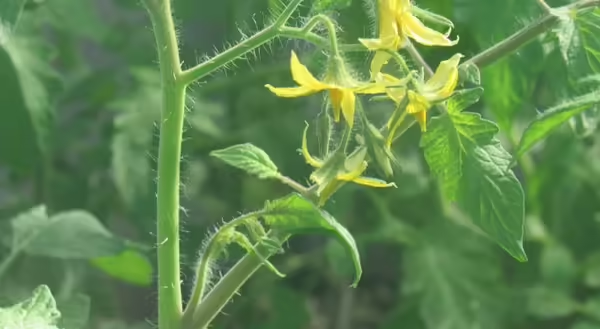
In late May and early June, folks worry it is too late to plant warm-season crops like tomatoes and peppers. Plant now, the timing is perfect for rapid root establishment and healthy plant growth.
With an average high of 76ºF and an average low of 55ºF, chilly nights (temperatures less than 50ºF) no longer threaten to stunt plant growth. If proper planting time is paired with regular watering, and proper training and pruning, plant vitality will be strong, and fruit set heavy.
Here is the scoop on watering peppers and tomatoes:
- To avoid stressing the plant, water at the base of the plant to limit wetness on leaves.
- Water early in the day to allow leaf moisture to dry before afternoon hours and dusk.
For tomatoes, water heavily at least twice per week. Tomatoes enjoy wet soils, not flooded soils. For peppers, thoroughly water, as needed, and at least once per week. For both crops, if it rains heavily, reduce watering.
Create a watering schedule, stay on it, then dial it in with daily observation. Check soil moisture throughout the season by probing the soil a few inches deep with your index finger. Repeat practice of this simple technique will help you learn when to water.
Prune pepper and tomato plants following plant establishment and indeterminate tomato plants throughout the growing season. For peppers, prune out the top pair of leaves, one to two weeks after planting to encourage strong root development and bushier growth which increases plant durability in strong winds. For all tomato plants (determinate and indeterminate), prune all foliage growth below the first fruiting truss (first “branch” with flowers) to prevent soil-borne disease and improve airflow.
For indeterminate tomatoes, continue to prune “suckers” (growth that originates at the main stem in the branch angle between the fruit truss and “leaf branch”) throughout the growing season to manage plant growth, improve aeration and increase fruit size. This practice will create a central leader growing system.
Resource guidance from your local garden center when shopping for determinate and indeterminate tomato plants.
Offer tomatoes and peppers support with a variety of store-bought or homemade trellises, cages or stakes. At planting, firmly insert your chosen support into the soil near the plant stem. Tie nylon twine or twist tie around support in a figure-eight pattern. Allow space between the cage and plant stem, do not tie too tightly together. Unsupported tomatoes, allowed to grow on the ground, are susceptible to soilborne diseases that rot fruit or kill the plant; unstaked peppers are liable to break in heavy storm winds.